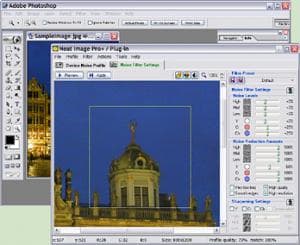

It’s easy to follow and the GUI is very user-friendly – it has only a small number of options to tweak and in fact can be self-taught in little time. That’s all contained in the manual accompanying the download. This review is not a step-by-step “how to” for using the plug-in. So I tested both digital image files and colour negative film scans and report on those results here. Applications designed for removing digital noise aren’t designed with scanner noise and film grain in mind, but if they can handle that too, it’s icing on the cake. Removing film grain while retaining image detail, however, remains a challenge for all those people scanning their archives and the small minority still shooting film.

In fact, to test the application and prepare this review I took steps I’d never otherwise deploy in order to generate noisy images. Why? Digital noise reduction is looking after itself these days with the latest crop of DSLRs – the images are more often than not so clean that it’s only under stress conditions (really high ISO, low light, underexposure) that an industrial-strength noise remover is needed. My interest in this is two-fold: minor – reducing noise in digital images major – reducing grain and scanner noise from film scans.
Neat image 7 review install#
It’s easy to install (a plug-in in the Photoshop Filter menu, but also works with Lightroom, Photoshop Elements and several other applications), easy to use and the results (noise reduction with detail retention) are the best I’ve achieved from any noise mitigating application. But Topaz Labs claims it’s the best on the market and the download of a fully-functional 30-day trial is free, so why not give it whirl? I did and I was impressed. My first reaction when they announced it was kind of ho-hum, yet another up-date of a noise removal program – we already have at least three very decent ones (Neat Image, Noise Ninja and Noiseware), not to speak of the improved tools in Lightroom, Camera Raw and other image editing applications.


 0 kommentar(er)
0 kommentar(er)
